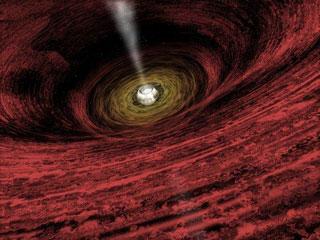
The 2m Himalayan Chandra Telescope (HCT).
HANLE, LEH (PTI): India is setting up a Rs 40 crore special facility to study and analyse gamma rays to unravel the mystery over the origins of the Universe.
The Indian Institute of Astrophysics (IIA) is setting up a 21-metre diameter telescope here, which will collect the gamma rays in space and help astro-physicists in studying their origin.
"The gamma rays are high energy processes in the Universe. Their study will help us in understanding the high energy physics close to black holes, compact objects, dark matter and high gravitational fields," Professor-in-Charge at Hanle's Indian Astronomical Observatory (IAO) Tushar P Prabhu said.
Hanle is considered one of the most suitable sites for such astronomical researches in the country due to its high altitude and dry weather.
IIA first installed The Himalayan Chandra Telescope (HCT) here about a decade ago as the first step towards development of the National Large Optical-Infrared Telescope.
"Its main aim will be to capture what is happening in the cosmic gamma ray sources. Along with the 21-metre diameter optical light collector, the telescope is also armed with a large array of photo multipliers to enhance the process," Prabhu said.
The effort to establish the facility is being led by Mumbai based Bhabha Atomic Research Centre (BARC), in collaboration with Tata Institute of Fundamental Research (TIFR) Mumbai, and Saha Institute of Nuclear Physics (SINP), Kolkata.
A regular monitoring of gamma ray emissions is expected to help in improving global knowledge on physical processes surrounding black-holes, and other compact objects with high gravitational fields, and nature of dark matter.
At present, scientists believe that the Universe was created through a big bang but the facility is expected to find out answers on the process leading to it before the beginning of the Universe.
The advantage of high altitude for atmospheric Cerenkov detectors was proved by IIA and TIFR by setting up a smaller facility, High Altitude Gamma Ray (HAGAR) experiment in 2008.
The discoveries made with this telescope include three galaxies with super-massive black-holes, and several new variable stars in our galaxy among other things.
 Previous Article
Previous Article Next Article
Next Article













The Indian Air Force, in its flight trials evaluation report submitted before the Defence Ministry l..
view articleAn insight into the Medium Multi-Role Combat Aircraft competition...
view articleSky enthusiasts can now spot the International Space Station (ISS) commanded by Indian-American astr..
view article